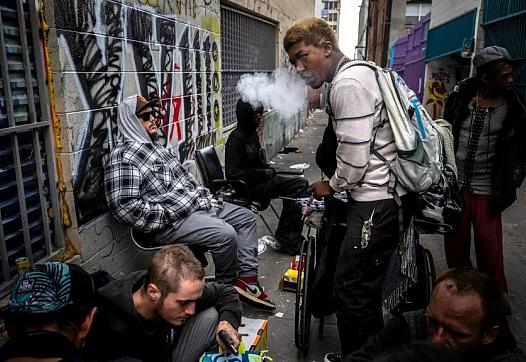Love, loss and LA’s deadliest drug: 3 families struck by fentanyl’s wrath
The story was originally published by the Los Angeles Daily News with support from our 2023 Data Fellowship.
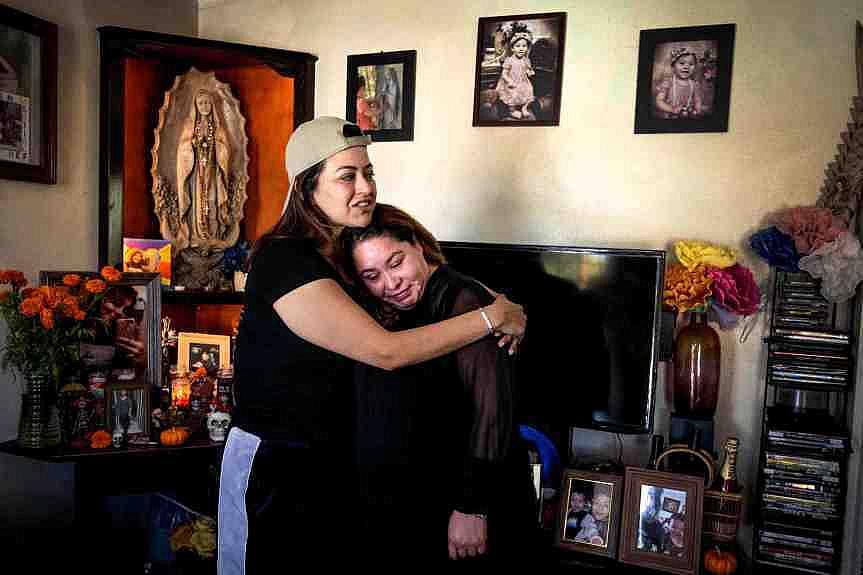
Camerina Ron de Buenrostro is comforted by Perla Mendoza next to an altar Ron de Buenrostro keeps in her Watts home in memory of her daughter Amy, who died of a fentanyl overdose at age 21 and was found in an abandoned building after months of reporting her missing. Mendoza, of Seal Beach, also lost her son Elijah, 20, to fentanyl. The altar became an ofrenda for Día de los Muertos.
Photo by Sarah Reingewirtz, Los Angeles Daily News/SCNG
A transgender teen from Santa Clarita, a Mexican American artist from Long Beach, and a former Skid Row resident and mother. They led very different lives, but died at the hands of the same killer: fentanyl.
The synthetic opioid took more than 1,900 lives in Los Angeles County in 2022. Jax Markley, Amy Buenrostro and Tashionna Martin were among them.
Their deaths are now part of a terrifying statistic. Their stories, a sobering reminder of the human price paid in L.A.’s fentanyl epidemic.
Remembering Jax Markley, 18
Jax Markley was too good for this world, his father Matt Markley says.
The Santa Clarita teen was always opening their heart and home to those in need – from the gay kid at school whose parents didn’t accept him to the sickly goose they insisted on rescuing at the local pond.
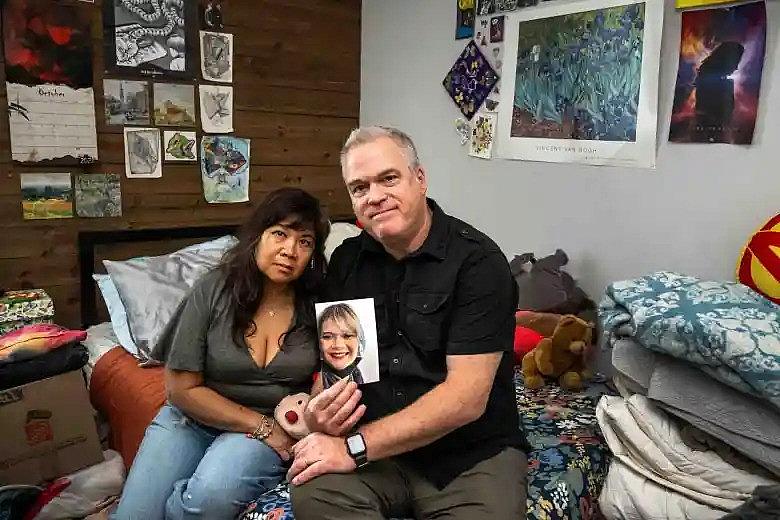
Holding a picture of their teenager Jax, Daisy and Matt Markley sit on Thursday, November 9, 2023 in Jax’s bedroom where Daisy found their youngest child overdosed on fentanyl a year ago in their Santa Clarita home.
Photo by Sarah Reingewirtz, Los Angeles Daily News/SCNG
But, on Nov. 6, 2022, Jax’s heart stopped. The cause of death: a fentanyl-laced pill.
“I touched Jax and they were cold,” Daisy Markley says recalling the morning she found Jax, who used the pronoun “they”, dead in bed. “They fell over and there was black bruising on their face. I started screaming for Matt.”
“I’ll never forget that sound,” Matt Markley adds.
The following months were a tornado of grief, guilt and anguish as the couple tried to figure out where they went wrong as parents.
Jax was a happy, smiley baby, the kind that strangers couldn’t help but dote upon. Growing up, Jax loved Disneyland trips with mom and listening to classic rock with dad.
At about 13, Jax, who was named Genevieve at birth, told their parents that they were transgender.
“I helped Jax pick out their name and we fully supported it,” says Matt Markley. “We were like, ‘Let me know what you want and we will get you the help that you need.’”
But acceptance at home didn’t mean acceptance everywhere. In middle school, the outgoing, theatrical kid became anxious and withdrawn.
Then COVID-19 came along and the bad became worse. Therapy moved online, friends were confined to a screen, and Jax retreated further into themselves. A boyfriend brought high-highs, low-lows and, Daisy and Matt Markley say, probable connections to drug sellers.
The Markleys knew their teen had experimented with alcohol and marijuana. They both tried to educate Jax about the dangers without being judgmental and established home as a safe place for discussing any issues.
But fentanyl-laced pills were a devil the Markleys didn’t see coming. And the stigma surrounding drugs was strong enough, Matt Markley said, that Jax never felt comfortable sharing their illicit substance use.
Since Jax’s death, the Markleys have become involved in spreading awareness about the dangers of fentanyl and calling on policymakers to invest in solutions.
Through this advocacy work, they met several other parents who also lost kids to fentanyl and began noticing troubling patterns: COVID-19 and depression. Social media and bullying. Sexual identity and isolation. Factor in the rising cost of living, spiraling student debt, and threat of climate change — today’s world can feel like a scary place.
“These are all pressures that factor into why fentanyl is killing so many of our kids,” Jax’s father says, adding that it’s important for older generations to understand the challenges today’s youth faces.
Now, more than a year later, the couple is finally reaching an answer to the question of what they could have done better:
“We did everything we could,” says Matt Markley. “We’re finally getting to a place where our sense of reason is catching up with our overwhelming guilt for having failed to do something to make things different. There’s so much out of our control, and this tragedy is not unique to us.”
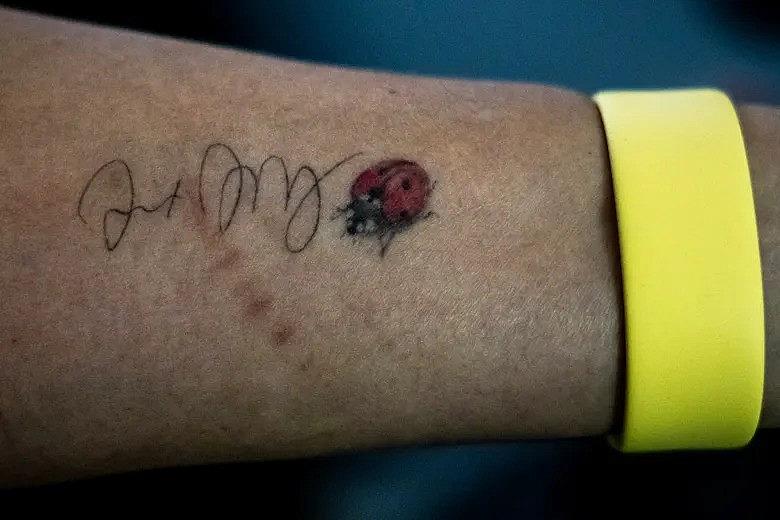
Daisy Markley, a doctor, wears a memorial tattoo to her youngest child Jax as seen on Thursday, November 9, 2023. Markley found Jax, who loved ladybugs, overdosed on fentanyl in their Santa Clarita home.
Photo by Sarah Reingewirtz, Los Angeles Daily News/SCNG
Remembering Tashionna Martin, 31
For Danielleneika Graham the community on Skid Row has long felt like family, but in the last few years, those family members have been dying one by one, and it feels like the world doesn’t care.
The Skid Row neighborhood recorded about 140 fentanyl overdoses in 2022, according to data from the L.A. County Medical Examiner-Coroner.
On Nov. 2, 2022, Graham lost her childhood best friend, Tashionna Martin, to a fentanyl overdose.
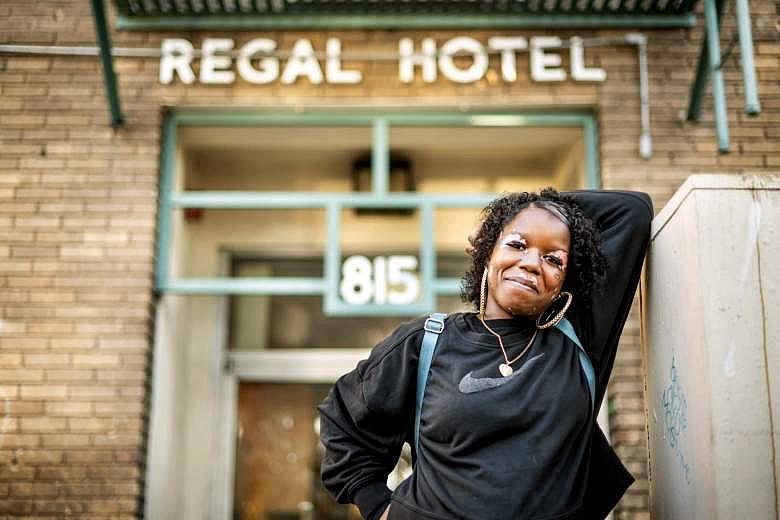
Danielleneika Graham, 31, poses on Friday, November 17, 2023 at the Regal Hotel where she use to live on skid row in Los Angeles. Graham’s best friend died a year ago from a fentanyl overdose and today Graham works multiple jobs on skid row including in harm reduction.
Photo by Sarah Reingewirtz, Los Angeles Daily News/SCNG
“She was fierce like a lion and no matter where she went, she can light up a room,” Graham says. “She was a really good person — it felt like wherever she goes she had everybody laughing and smiling.”
Starting in about 2005, the two young teens would run away from home and, more often than not, wind up hanging out on Skid Row. As the girls grew up they remained close, cheering each other on through different struggles and bouts of homelessness.
“They call it the devil’s playground, and they say once you come to Skid Row you always get stuck,” Graham says. “They say it doesn’t matter if you do drugs, if you don’t do drugs, you get stuck down here somehow.”
Despite Skid Row’s stickiness, both women had made major life changes in the past few years. Martin moved back in with family to care for her two children, and Graham received a Section 8 housing placement for her children and her boyfriend, who was born and raised on Skid Row.
But troubles with substance use followed Martin wherever she went, even as she tried to hide her drug use from friends and family, Graham says.
Today, Graham works for nonprofit organizations on Skid Row educating people about the dangers of fentanyl, connecting them to services and distributing resources like Narcan, a nasal spray that reverses opioid overdoses.
“As far as saving lives, I’ve done that probably about four times, so I know for sure what Narcan does,” she says. “I’ve seen somebody go purple like and come back.”
She gets great satisfaction from the work, but says it’s only a small part of what’s needed to combat the epidemic.

Camerina Ron de Buenrostro poses with her daughter Amy’s ashes next to an altar in her honor at her Watts home. Amy died of a fentanyl overdose at age 21 and was found in an abandoned building after months of reporting her missing. The altar became an ofrenda for Día de los Muertos.
Photo by Sarah Reingewirtz, Los Angeles Daily News/SCNG
“I feel like the awareness needs to be broader, it shouldn’t just be in Skid Row or even in Hollywood — where that’s where most of (fentanyl use) is going on,” she said. “I feel like the warning needs to be broadcast louder for other folks, because (fentanyl) is not just around here.”
Remembering Amy Buenrostro, 21
Dia de Los Muertos is normally a time to celebrate the memory of one’s ancestors.

In her Watts home Camerina Ron de Buenrostro shows a picture of her and her children including Amy, who died of a fentanyl overdose at age 21 and was found in an abandoned building after months of reporting her missing.
Photo by Sarah Reingewirtz, Los Angeles Daily News/SCNG
But this year, the ofrenda, or altar, in Camerina Ron de Buenrostro’s Watts apartment was dedicated to her daughter Amy.
Ron de Buenrostro found out about Amy Buenrostro’s death in May 2023, seven months after Amy went missing and five months after she died. Amy left behind a five-year-old son, Damien, who is now being raised by Ron de Buenrostro.
A toxicology report from the L.A. County Coroner-Medical Examiner found several substances in her system, including a lethal amount of fentanyl.
Amy’s death is hard for her mother to comprehend.
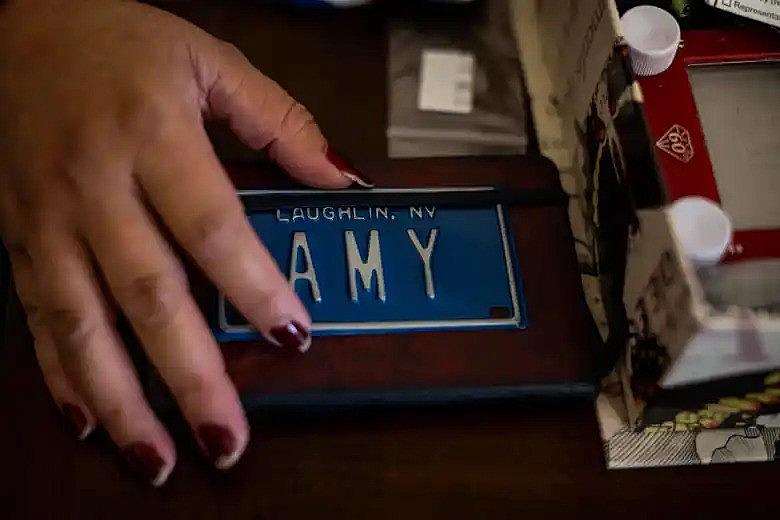
In her Watts home Camerina Ron de Buenrostro keeps a memory box of her daughter Amy, who died of a fentanyl overdose at age 21 and was found in an abandoned building after months of reporting her missing.
Photo by Sarah Reingewirtz, Los Angeles Daily News/SCNG
“Until today, I can’t believe it,” she says in Spanish. “I keep waiting for her, even though I know she won’t return. If you looked at her face, you didn’t see the face of a drug addict.”
Ron de Buenrostro says Amy was an energetic child with the world’s most contagious laugh. She was a talented artist and loved drawing, journaling and listening to Nicki Minaj.
Amy had struggled with substance use and addiction for several years, but her mother did the best she could to support her. She enrolled her in a rehabilitation center back home in Mexico, and later housed Amy and her son in her Watts apartment.
Things went well in the first six months after Amy returned to Los Angeles, but then she started hanging out with old friends and disappearing on weekends, Ron de Buenrostro says.
In the first weekend of October 2022, she didn’t came back, and finding Amy became her mother’s full-time job.
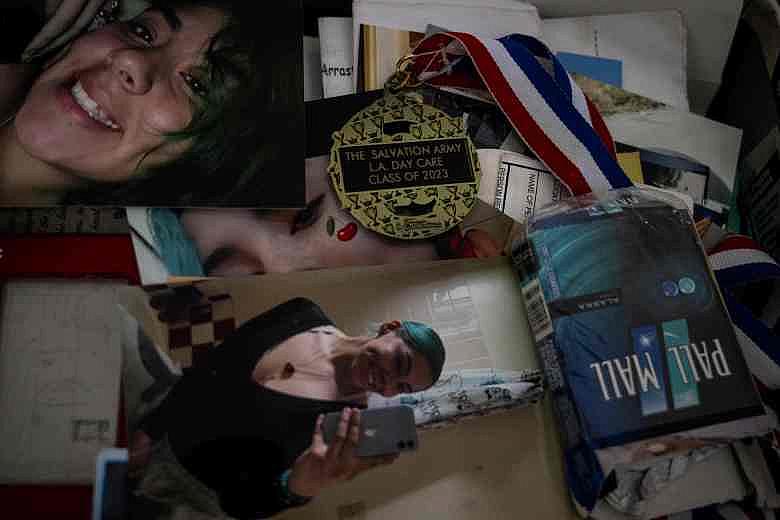
In her Watts home Camerina Ron de Buenrostro keeps a memory box of her daughter Amy, who died of a fentanyl overdose at age 21 and was found in an abandoned building after months of reporting her missing.
Photo by Sarah Reingewirtz, Los Angeles Daily News/SCNG
“All those months, I couldn’t sleep,” she says. “My weekends were going out to look for her at the parks and on the streets to see if anyone had seen her. I would show them her picture, but nothing.”
In May 2023, Ron de Buenrostro received a phone call from the Los Angeles County Department of Medical Examiner, alerting her that a body matching Amy’s description had been identified.
“When I heard the news,” she says, “I wanted to die too.”
Since then, she has struggled to process her grief while caring for Amy’s son. A friendship, with Perla Mendoza, has become a lifeline.
Mendoza lost her 20-year-old son, Eli Mendoza, to a fentanyl pill in 2020 and has since become involved in fighting the fentanyl epidemic through advocacy work. A detective referred Mendoza to Ron de Buenrostro and the pair quickly became close, bonding over their shared suffering.
Now, both moms are seeking to raise awareness around the dangers of fentanyl — like Graham and the Markleys — in the hopes of preventing other parents from experiencing their unbearable loss.


